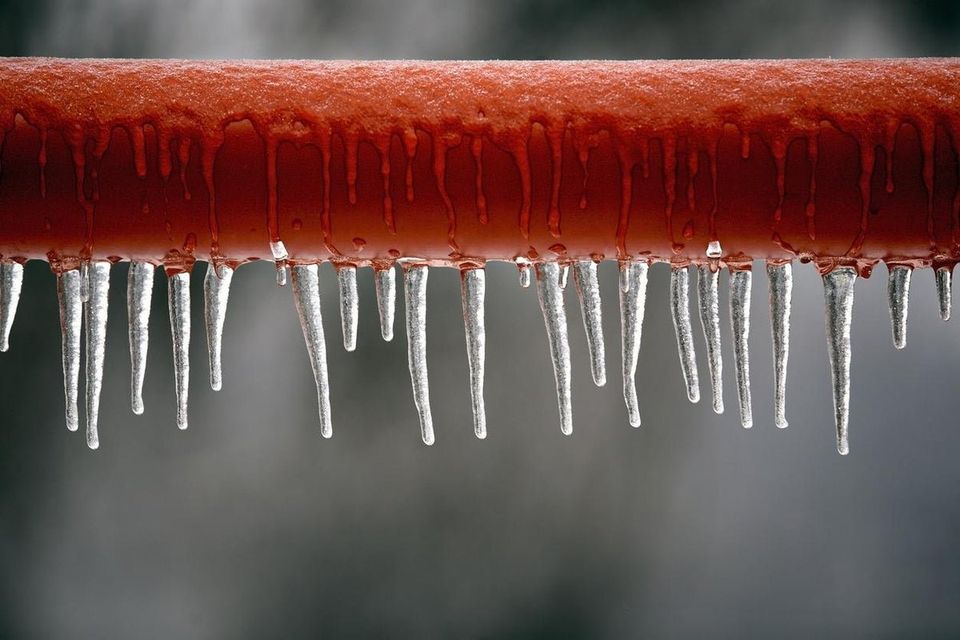Ways to Prevent Frozen Pipes in Winter: Pro Tips
Ways to Prevent Frozen Pipes in Winter: Pro Tips
Blog Article
In this article below you will find lots of reliable expertise pertaining to Preventing and dealing with frozen pipes.

Cold weather can wreak havoc on your plumbing, especially by freezing pipelines. Below's exactly how to avoid it from happening and what to do if it does.
Introduction
As temperatures decline, the threat of icy pipelines rises, possibly bring about costly repair services and water damages. Recognizing exactly how to prevent icy pipes is essential for homeowners in cool environments.
Recognizing Frozen Pipes
What triggers pipes to freeze?
Pipelines freeze when revealed to temperatures listed below 32 ° F (0 ° C) for prolonged periods. As water inside the pipelines ices up, it broadens, putting pressure on the pipe walls and potentially causing them to rupture.
Risks and damages
Icy pipelines can result in supply of water interruptions, property damage, and expensive repair services. Ruptured pipelines can flooding homes and create considerable architectural damages.
Indications of Frozen Piping
Determining frozen pipelines early can prevent them from rupturing.
How to determine frozen pipelines
Look for decreased water flow from taps, unusual odors or noises from pipelines, and visible frost on subjected pipelines.
Prevention Tips
Protecting susceptible pipes
Cover pipes in insulation sleeves or utilize warm tape to protect them from freezing temperature levels. Focus on pipes in unheated or exterior locations of the home.
Heating techniques
Keep interior areas appropriately heated up, particularly areas with plumbing. Open cabinet doors to enable cozy air to flow around pipes under sinks.
Securing Outside Pipes
Yard pipes and outdoor taps
Separate and drain garden hose pipes prior to winter months. Set up frost-proof faucets or cover outside taps with shielded caps.
What to Do If Your Pipelines Freeze
Immediate activities to take
If you believe icy pipelines, maintain taps open up to alleviate stress as the ice thaws. Use a hairdryer or towels soaked in warm water to thaw pipes slowly.
Long-Term Solutions
Architectural changes
Take into consideration rerouting pipes far from exterior wall surfaces or unheated areas. Add extra insulation to attics, basements, and crawl spaces.
Upgrading insulation
Buy premium insulation for pipes, attic rooms, and wall surfaces. Correct insulation assists maintain regular temperatures and minimizes the danger of frozen pipelines.
Final thought
Stopping frozen pipes calls for aggressive measures and quick actions. By comprehending the causes, signs, and preventive measures, home owners can safeguard their pipes during cold weather.
6 Proven Ways to Prevent Frozen Pipes and Protect Your Home
Disconnect and Drain Garden Hoses
Before winter arrives, start by disconnecting your garden hoses and draining any remaining water. Close the shut-off valves that supply outdoor hose bibs and leave the outdoor faucet open to allow any residual water to drain. For extra protection, consider using faucet covers throughout the colder months. It’s also important to drain water from any sprinkler supply lines following the manufacturer’s directions.
Insulate Exposed Pipes
Insulating your pipes is an effective way to prevent freezing. Pipe insulation is readily available at home improvement stores and is relatively inexpensive. Pay close attention to pipes in unheated areas such as the attic, basement, crawl spaces, or garage. Apply foam insulation generously to create a buffer against the cold. You can also wrap your pipes in heat tape or thermostat-controlled heat cables for added warmth.
Seal Air Leaks
Inspect your home for any cracks or openings that could let in cold air. Seal any holes around the piping in interior or exterior walls, as well as the sill plates where your home rests on its foundation. Additionally, make sure to keep your garage door closed unless you’re entering or exiting. Leaving it open creates a significant air leak that can lead to frozen pipes.
Allow Warm Air Circulation
During cold snaps, it’s essential to allow warm air to circulate evenly throughout your home. Leave interior doors ajar to promote better airflow. Open kitchen and bathroom cabinets to help distribute heat consistently around the rooms. If you have small children or pets, be sure to remove any household chemicals or potentially harmful cleaners from open cabinets for safety.
Let Faucets Drip
A small trickle of water can make a big difference in preventing ice formation inside your pipes. When temperatures drop significantly, start a drip of water from all faucets served by exposed pipes. This continuous flow helps prevent the water from freezing. Additionally, running a few faucets slightly can relieve pressure inside the pipes, reducing the chances of a rupture if the water inside does freeze.
https://choateshvac.com/6-proven-ways-to-prevent-frozen-pipes-and-protect-your-home/

I stumbled upon that blog entry on Helpful Tips to Prevent Frozen Pipes this Winter when doing a lookup on the search engines. Appreciated our article? Please share it. Help other people locate it. We truly appreciate reading our article about Preventing and dealing with frozen pipes.
Go Deal Now Report this page